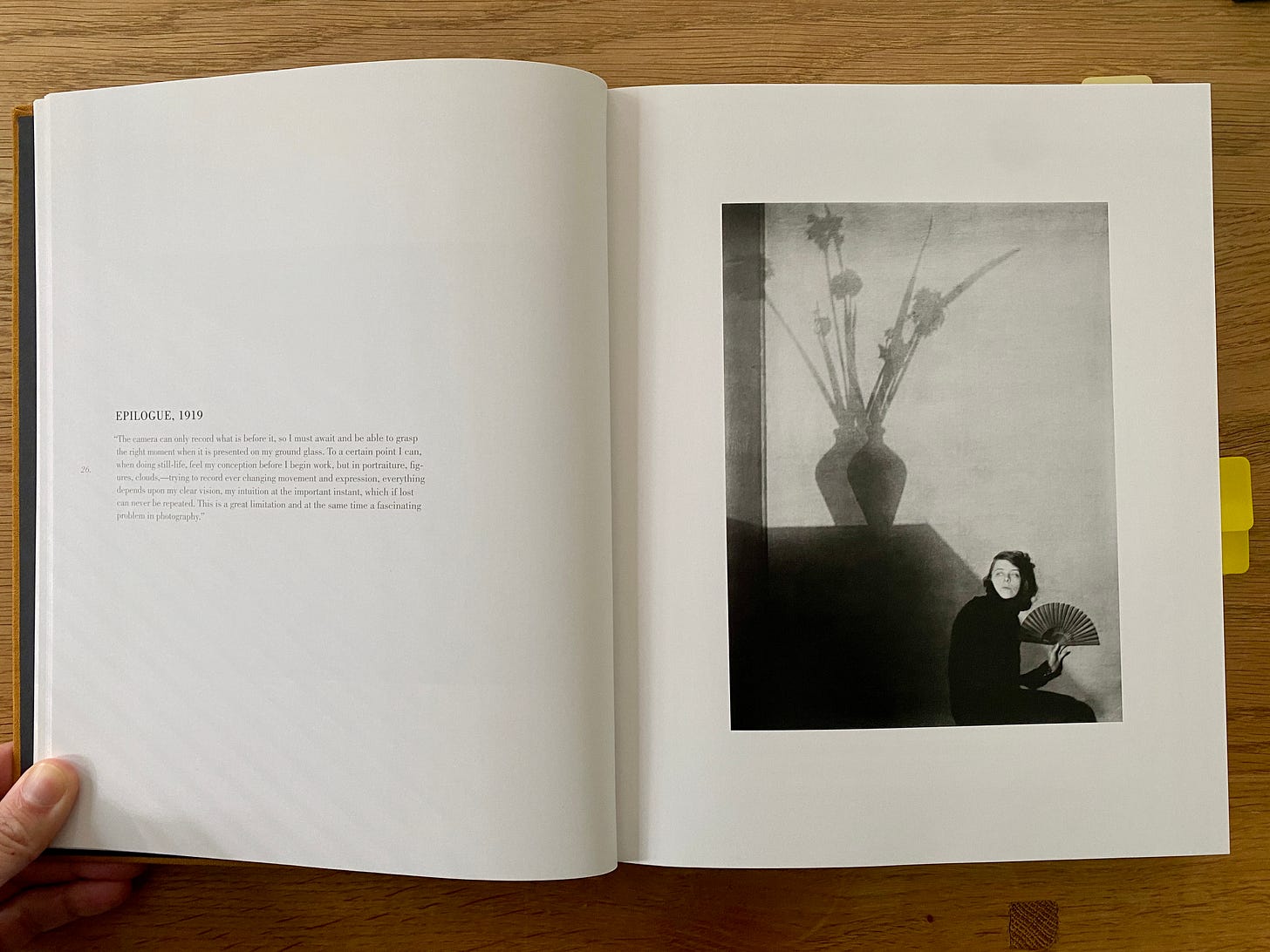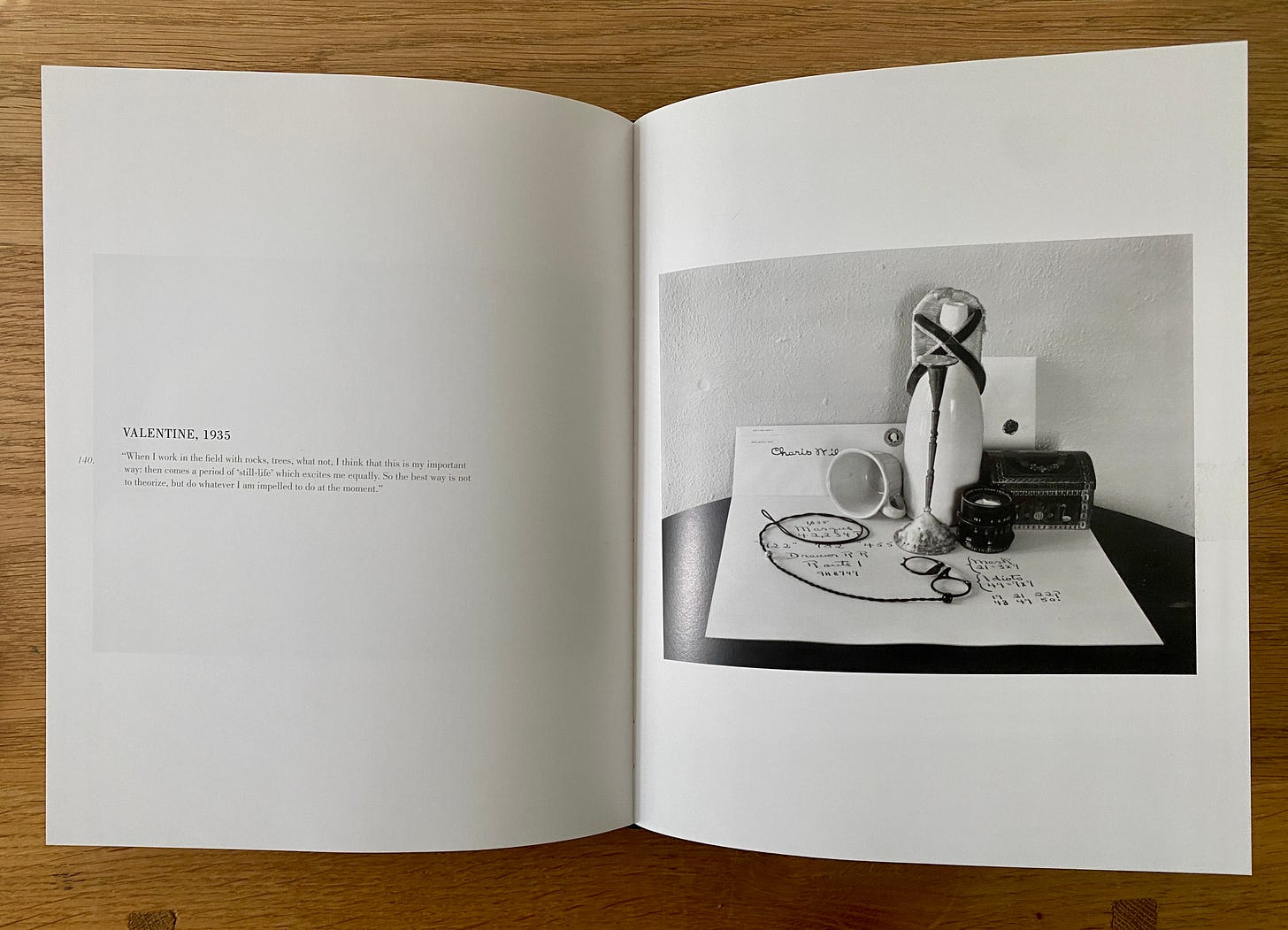In 2020 I was gifted a monograph with photographs by Edward Weston and it’s been sitting close by my favorite reading spot ever since. What I love most about this book is - besides its beautiful quality and the amazing photographs - that every photograph in the book is accompanied by a few sentences from Weston’s journals he left behind.
But before I get into his writing, his photographs and what they mean to me, let me give you a very brief overview of who Edward Weston was:
Edward Henry Weston is born March 24, 1886, in Highland Park, Illinois. His photographic journey begins when -at the age of sixteen- his father gives him his first camera. In the first years, he roams the streets of Chicago, photographing its beautiful parks.
In 1906 Weston moves to California and decides to become a professional photographer. First, he offers his services by walking from door to door photographing children, pets and funerals and a bit later working for other photographers.
In 1911 he opens his own portrait studio in Tropico, California which functions as his main base for the next two decades. In 1923 Weston moves to Mexico, where he works for the next three years until he returns to California in 1926.
Although he begins his career as a portrait photographer he soon moves away from traditional portraiture to pursue a more artistic approach to photography. Weston’s work ranges from portraiture to landscape and industrial photography, but is probably best known for his close-up studies of natural forms, such as peppers, shells, and nudes.
Throughout his career, Edward Weston's photography received critical acclaim and was exhibited in major galleries and museums. His contributions to the development of photography as an art form left a lasting legacy, and his work continues to be celebrated and studied by photographers and art enthusiasts worldwide.
In 1946 Weston began experiencing symptoms of Parkinson’s disease, which impacted his ability to take photographs so much, that in 1948 he stops taking photos altogether. Edward Weston dies on January 1st, 1958 at the age of 72.1
THE DAYBOOKS
Edward Weston's Daybooks are a series of diaries he kept writing throughout his life. When he began writing in the early 1920’s he had no intention of publication. A few excerpts have been published in different publications during his lifetime, but only after his death the Daybooks were compiled and published in a two-volume set.2
In the foreword of The Daybooks of Edward Weston Beaumont Newhall writes:
“Seldom has an artist kept a journal as vivid, as intimate and as sincere as Edward Weston. (He)… wrote down his thoughts about life, outlined his hopes, catalogued his despairs, mercilessly critiqued his own photographs, and recorded every experience that was meaningful to him.
The result is an extraordinary document of a struggle of an artist to forge a style, to adjust himself to the world, to determine his position in society, and to appraise his contributions to it.”
The Daybooks consist of almost 300 pages of diary entries. Starting with early fragments from 1922 and ending with the last entry from April 22, 1944. Some of the entries are several pages long, others just contain a few thoughts and sentences.
Just as probably any other Diarist, Weston used his journals to reflect on his personal life and his relationships. He wrote a lot about the interactions with his family, friends and fellow artists which included Ansel Adams, Diego Rivera, Alfred Stieglitz and Tina Modotti.
He also extensively documented his many travels throughout Mexico and the American West where he created many of his iconic photographs.
But most interesting to me is reading about his creative process, his techniques and his philosophical musings about photography.
Epilogue, 1919
“The camera can only record what is before it, so I must await and be able to grasp the right moment when it is presented on my ground glass. To a certain point I can, when doing still-life, feel my conception before I begin to work, but in potraiture, figures, clouds - trying to record ever changing movement and expression, everything depends on my clear vision, my intuition at the important instant, which if lost can never be repeated. This is a great limitation and at the same time a fascinating problem in photography.”3
If we take a look at the variety of Weston’s photographs we notice that he isn’t limiting himself to one subject matter. He photographs whatever he desires at that moment. Which I find personally very helpful and deliberating, considering how often I read articles about how important it is to have your own “style” and how much I find myself questioning my work.4
Valentine, 1935
“When I work in the field with rocks, trees, what not, I think that is my important way: then comes a period of ‘still-life’ which excites me equally. So the best way is not to theorise, but do whatever I am impelled to do at the moment.”5
Nude, 1939
“I am not limiting myself by theories, so I never question the rightness about my approach. If I am interested, amazed, stimulated to work, that is sufficient reason to thank the Gods, and go ahead! Dare to be irrational!- keep free from formulae, open to any fresh impulse, fluid.6
Weston’s Daybooks gave me an idea of how much he loved and cared about photography, how enthusiastic and excited he could get about photographing simple things like peppers or shells and how much thought and effort he put into his beautiful creations. It made me relive similar experiences I had photographing and it also reminded me that inspiration and exciting subject matter can be found anywhere.
Pepper No. 30, 1930
“I have worked with peppers again, surprising myself! Sonya brought several home, and I could not resist. Though I thought to have finished with peppers. But peppers never repeat themselves: shells, bananas, melons, so many forms, are not inclined to experiment,- not so the pepper, always excitingly individual. So I have three new negatives, and two more under way.”7
Weston also wrote about his struggles and the mistakes he made while photographing and used his writings to reflect on these experiences. Having this insight from an iconic artist like Edward Weston shows me, we all struggle from time to time. It is part of the creative process and just a question of how to deal with it.
His Daybooks inspired me to document my photographic journey in a similar way. But this is something I want to share more about another time.
That is all from me today.
If you are interested in any of these books I was referring to, here are a few more infos:
Edward Weston: The Flame of Recognition. An Aperture Monograph - Edited by Nancy Newhall.
Edward Weston by Steve Crist.
The Daybooks of Edward Weston. Two volumes in one: 1. Mexico & 2. California. Edited by Nancy Newhall.
I hope you enjoyed this week’s edition today. Next week I hopefully will share with you the photos from a roll of 35mm film I made in Denmark.
Thank you for being here and for reading this week’s newsletter.
X,
Susanne
If you enjoyed this weeks topic, I would love to hear from you. Please share your thoughts in the comments with me.
If you are enjoying My morning muse, you can support me by subscribing to my newsletter (or even becoming a paid subscriber), liking the post, and sharing it with friends. It would mean the world to me!
For more information on Edward Weston and his work, please visit www.edward-weston.com/edwardweston.
P. xiii, The Daybooks of Edward Weston edited by Nancy Newhall.
P. 26, Edward Weston by Steve Crist.
I will write about this in the future.
P. 140, Edward Weston by Steve Crist.
P. 208, Edward Weston by Steve Crist.
P. 112, Edward Weston by Steve Crist.









Thank you for such a wonderful post, Susanne. And timely, too. I’m on the 3rd week of a nine-month photography program and yesterday we had a session on early photo history, which gave me a quite a few photographers to research, but now I will prioritize looking more into Weston.
The fact that he photographed anything he was interested in and didn’t worry about staying within a particular theme is liberating.
Wonderful work Susanne. As an avid journaller, the combination of photography and journaling is sublime.
Photographic history is endlessly fascinating to me, yet the Day Books passed me by. I’ll put them on my list.
.